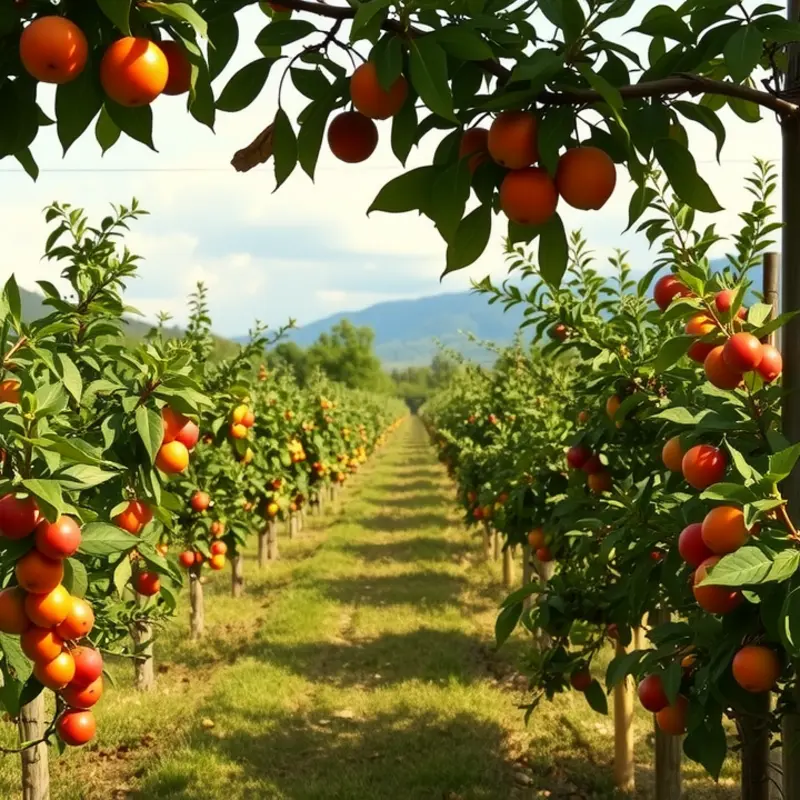Throughout history, banquets have marked pivotal moments, bringing together people to share not just conversation, but remarkable food. From ancient Rome to imperial China, these grand celebrations showcased the wealth, culture, and culinary creativity of their time. Join us as we delve into dazzling dishes served at some of history’s most famous feasts, exploring the ingredients, traditions, and stories behind them. Whether you’re a culinary enthusiast or a history buff, these historical banquets offer a flavorful glimpse into past cultures and their vibrant culinary traditions.
A Taste of the Roman Republic: Feasting with the Elite

In the grand halls of ancient Rome, where political power was as coveted as fine trinkets, the opulence of a banquet was a reflection of status. The elite knew that their influence was measured not just by their wealth or soldiers, but also by their ability to dazzle the senses. Roman banquets were displays of luxury, where an abundance of exotic dishes sparked both awe and desire.
These lavish feasts often began with gustatio, the appetizer course. Guests would savor plates of eggs, olives, and autumn’s ripest fruits. This was merely an introduction to the culinary spectacle that followed. The main course, prima mensa, was a parade of decadent proteins. Roasted peacock, with its iridescent feathers sometimes included for dramatic effect, was a dish that signified both wealth and rarity.
Equally prestigious was the wild boar, often roasted whole, served alongside freshwater fish like mullet or sea bream, delicacies imported from the farthest reaches of the Roman Empire. The imperial kitchens were centers of experimentation, combining these meats with vegetables and legumes not just for sustenance but to elevate flavors.
Herbs and spices were the linchpins of Roman cuisine. From distant Kashmir, pepper was an essential, adding heat and depth to stews and sauces. Coriander, fennel, and the anise-like silphium played pivotal roles, though the latter’s extinction by overharvesting highlights its historical significance. Mint and rue lent their aromas to both savory and sweet concoctions, a testament to their versatility.
Roman chefs were artists in their own right. Apicius, a legendary gastronome and cook, penned one of the earliest known cookbooks, providing insights into the sophisticated techniques of the time. His recipes, often complex and requiring precise blends of oils, garlic, and spices, underpin the Roman appreciation for culinary craftsmanship.
Wine was a mandatory accompaniment, particularly when sweetened with honey, producing mulsum. This beverage, served both as a standalone treat and in elaborate punches, soothed the palate and lightened the fumes of the more pungent dishes.
The interplay between food and power was evident, as hosting an extraordinary feast could cement alliances or intimidate rivals. Roman banquets were as much about the art of diplomacy as they were about indulgence. The ability to offer generous hospitality was a form of soft power in the volatile politics of the Republic.
Yet, the reliance on imported ingredients and spices for these banquets suggests a complex network of trade—an aspect of Roman culinary culture echoed in many societies today. Explore more about how trade influenced culinary tastes worldwide.
Within the marble-clad dining rooms, far more than food was exchanged. Ideas, alliances, and rivalries all simmered alongside dishes that were rich in their diversity and ambition. The Roman banquet was a microcosm of the Republic’s broader thirst for dominance, showing how deeply food was woven into the empire’s fabric of life.
Imperial Banquets of China: Flavors of Tradition

In the grandeur of ancient China’s imperial courts, banquets transcended mere sustenance. They embodied profound respect and philosophical reflection. The imperial kitchens of dynasties like the Tang and Qing were veritable hubs of culinary innovation, where meticulous preparation was a hallmark.
Each dish presented at these banquets was a reflection of the seasons, showcasing both harmony and balance. Peking duck, for example, became a symbol of imperial wealth. Its preparation was an art form, involving air-drying and roasting to achieve crispy skin juxtaposed with tender meat. This attention to detail was crucial, as dining in the imperial court wasn’t merely eating; it was an experience steeped in ritual and cultural significance.
Consider the delicate lotus root soup, where lotus, a symbol of purity, was expertly combined with meats and herbs to nourish both body and spirit. Such dishes conveyed meanings beyond taste and were tailored to balance ‘yin’ and ‘yang’—a key tenet of Chinese philosophy. Emperors and their guests partook in meals that emphasized seasonal ingredients, echoing nature’s cyclical rhythms.
Presentation was paramount during these feasts. Colorful arrays of dishes were arranged in harmony, following the principles of ‘Five Elements’. A meal harmonized fire (red foods) with water (black foods), wood (green foods), metal (white foods), and earth (yellow foods). This methodical approach not only enhanced aesthetic appeal but also aligned with traditional Chinese medicinal beliefs.
Etiquette, too, held deep importance. From the emperor consuming his first bite to the servants’ silent intricacies, every detail underscored the respect and hierarchy of the court. The proper way to hold chopsticks, the sequence of serving dishes, and the interaction between hosts and guests were rituals interwoven with Chinese philosophy. Each movement and gesture reflected a web of respect, hierarchy, and tradition.
These practices echo in modern Chinese dining. Contemporary banquets still reflect the integrative approach to food, balance, and health. Today, the philosophy of mindful eating retains its resonance, as explored in this discourse on unconscious eating habits.
From their inception, China’s imperial banquets were more than feasts; they were multidimensional celebrations of culture, philosophy, and the art of culinary precision. As we sit down to contemporary meals inspired by these traditions, we remain tethered to a rich legacy that continues to inform and elevate the dining experience.
Final words
Both the Roman and Chinese imperial banquets not only offered lavish feasts for the senses but also intertwined food with the cultural fabrics of society. These culinary masterpieces reflected the values, craftsmanship, and traditions of their respective eras. Today, modern chefs continue to draw inspiration from these historical foundations, showcasing how the spirit of these legendary banquets lives on in contemporary gastronomy. The essence of each dish tells a story, enriching our understanding of history and connecting us through shared experiences around food, which remains a universal language.








